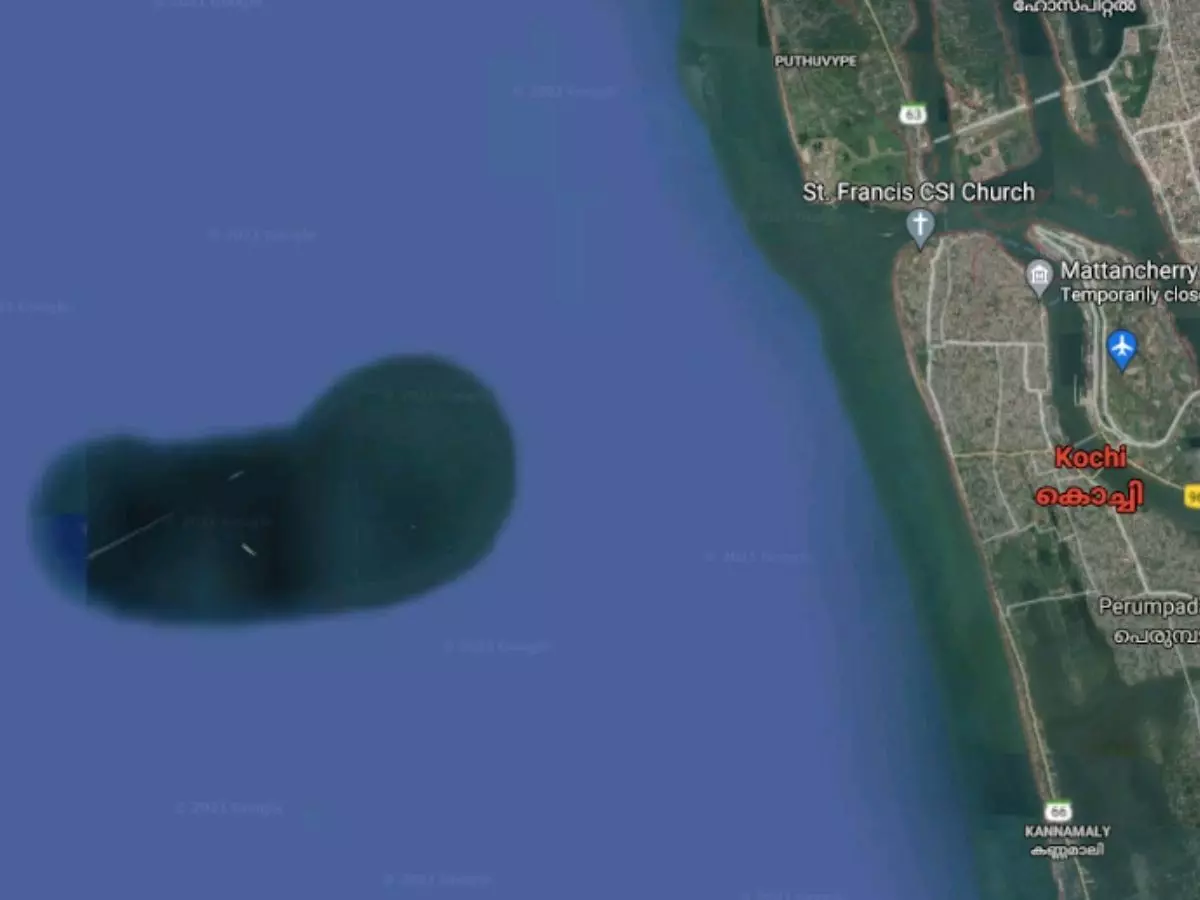Google Maps Shows Undiscovered Underwater Island Near Cochin In Arabian Sea
The discovery was made by the aforementioned organisationĄ¯s president KX Julappan who a few weeks ago had shared a screenshot of Google Maps along with the bean-shaped island off the coast of Cochin in a Facebook post.

A bean-shaped island has surfaced on Google MapsĄ¯ satellite view in the Arabian Sea just outside of Cochin, India.
 Google Maps
Google Maps
Also Read: India's Own Google Maps Soon As ISRO, MapmyIndia Join Hands For Homegrown Mapping Services
As reported first by TNM, the formation appears to be almost the size of west Cochin, but surprisingly, the structure is not visible to the naked eye. This has been baffling not just the locals but also the experts, who are now of the belief that this could be an underwater structure.
This matter is now under the investigation of the Kerala University of Fisheries and Ocean Studies (KUFOS). This was first brought to the attention after the Chellanam Karshika Tourism Development Society, wrote a letter to KUFOS, about this discovery.
The discovery was made by the aforementioned organisationĄ¯s president KX Julappan who a few weeks ago had shared a screenshot of Google Maps along with the bean-shaped island off the coast of Cochin in a Facebook post. According to his post, the formation was expected to be around 8 kilometres long and possessed a width of 3.5 kilometres.
Also Read: Google Maps Will Now Tell You Number Of COVID-19 Cases In A Location
The letter asked for studies to be conducted to denote reasons for this formation as well the role this would play in water currents and coastal erosion as well as whether it can be used for artificial shore conservation in Chellanam.
Experts feel itĄ¯s another underwater island
In a conversation with TNM, Vice-Chancellor of KUFOS, K Riji John states that according to the images, it looks like an ordinary underwater island that is commonly seen around the world.
 Getty Images
Getty Images
Also Read: Use Google Maps To Avoid Crowded Places And Stay Safe: Here's How
However, with the most recent discovery, they donĄ¯t really know what it is made up of for instance, whether it's made of sand or clay and its distribution. John added that this can only be determined after a thorough investigation.
He also stated that members of the fishing community have raised concerns about the formation of this being a result of dredging by the Cochin port. Factors like underwater current, littoral drift processes such as accretion -- a phenomenon where coastal sediment returns to the shore -- or erosion of the coast could have contributed to this. The problem of erosion is commonly seen in several areas in the south-Kerala region whereas in Vypeen, accretion is observed that have been kilometres long.








